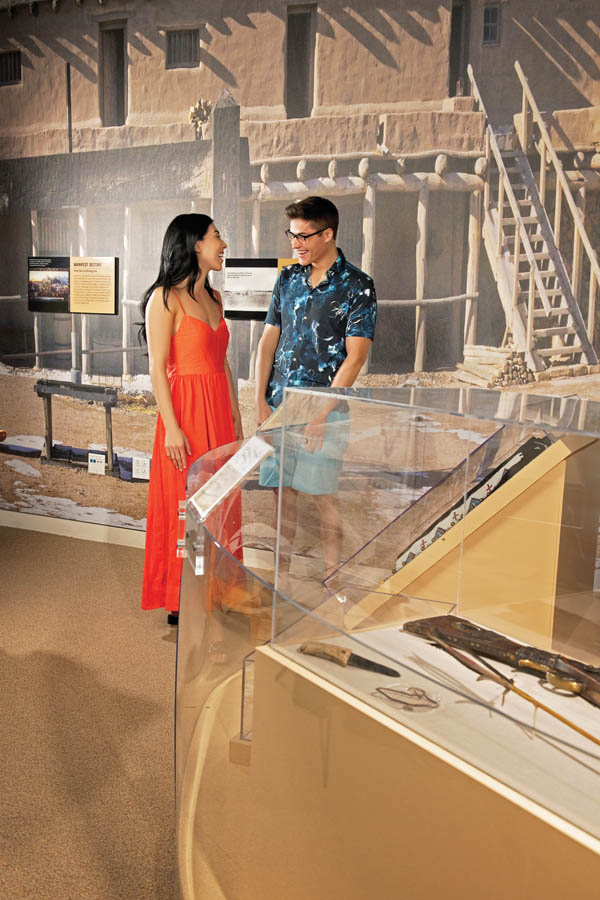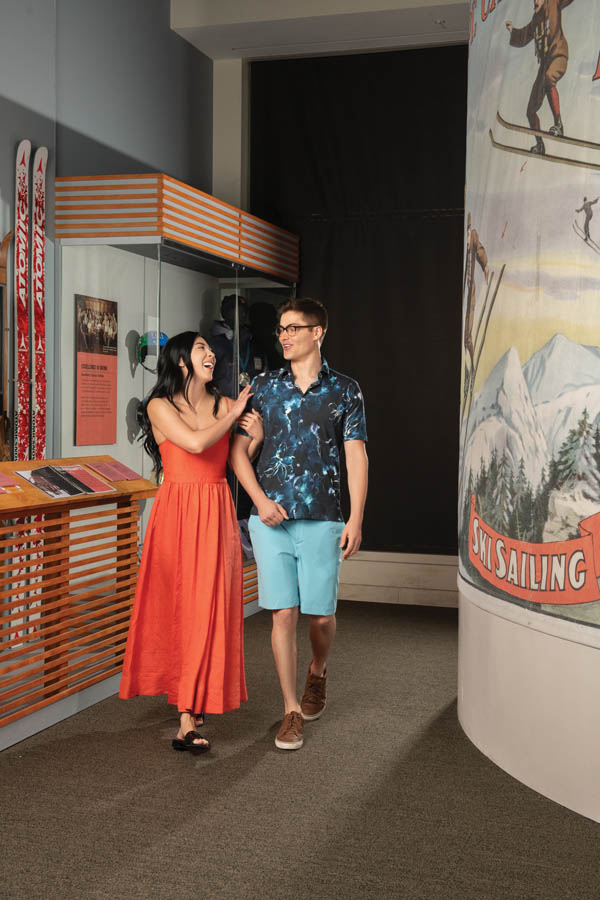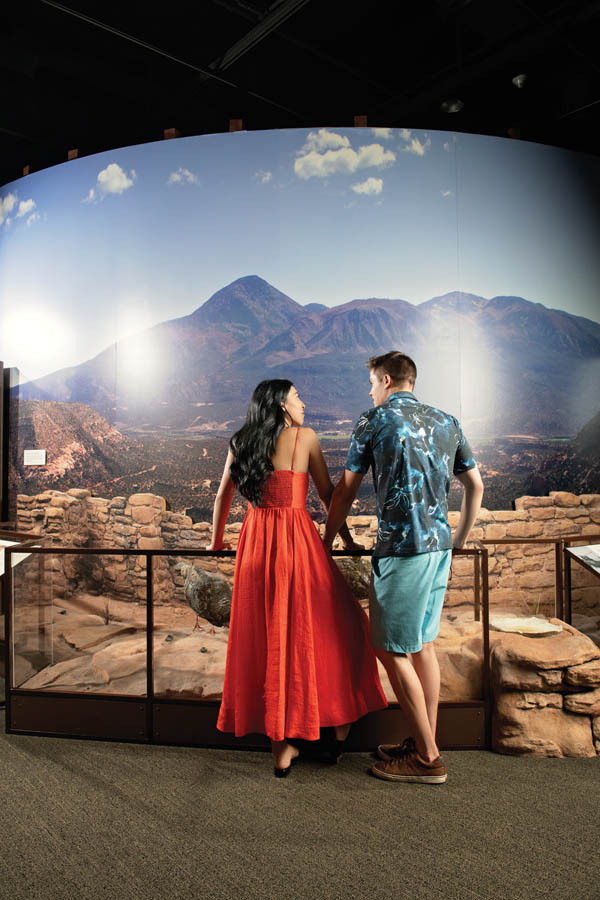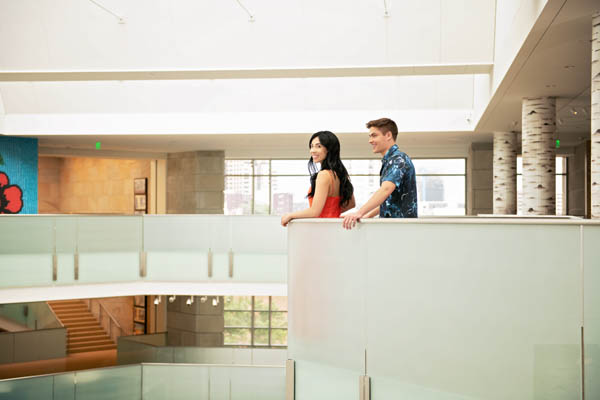Fascinated with a snow globe she received for her birthday, Rebecca Gerald became an avid collector at the young age of five. Gerald’s home in Highlands Ranch is filled with dozens of the glass figures she’s passionately collected over the past four decades.
Why do humans collect? It’s an age-old question that psychologists and neuroscientists have tried to answer, with many arriving at the same conclusion: Collecting in is our DNA, tracing back to our hunter-and-gatherer days, though we don’t just gather tangible objects. Collections can also be of experiences—consider the music fan who follows a favorite band from city to city, or the traveler whose goal is visiting all 50 states.
The reasons people collect vary; it could be to learn more about the objects, for investment purposes, for the thrill of the hunt or just because it’s fun. For Gerald and her prized snow globes, it’s about curating a collection that tells her life story.
“My snow globe collection is like my own little history museum, since I can remember exactly where and when I acquired each one,” she says. “But the real joy, for me, is in sharing them with others, of sharing the stories behind them—the special celebrations, the places I’ve been and the people I’ve met.”





It’s sharing the stories behind the collections where museums come in. History Colorado (HC) was established in 1879 as the State Historical Society of Colorado, just three years after Colorado became a state. Today it operates in the History Colorado Center, a four-story space in downtown Denver. As a state-funded agency, HC knows that the artifacts in the collection—totaling more than 15 million—belong to the people of Colorado, with HC as the trusted caretakers. And like with Gerald and her snow globes, HC also knows that the real value in the vast collection is not in simply placing objects on display for the public to view, but in sharing the compelling stories behind the objects … the story of Colorado.
“Our collection isn’t just ‘stuff,’” explains Alisa DiGiacomo, HC’s director of curatorial services and senior curator. “We are the stewards of the objects, but also of the important stories that go along with them.”
Case in point, History Colorado Center’s newest permanent exhibit, “Zoom In: The Centennial State in 100 Objects.” It includes 100 carefully selected artifacts from HC’s collection, representing the idea of “how Colorado became Colorado.” The 100 objects are compelling—in part, because it was surely a daunting task to choose just 100—but also in the way most of them seem like ordinary objects until you learn why they were chosen. The rustic mining pick is not just a pick, but a symbol of Joe Zanetell’s work to help improve the conditions for workers in Colorado’s coal mines in the early 1900s. The basic hammer isn’t just a tool you hit a nail with; it belonged to Charles Walden Rothwell, one of the residents of Dearfield, an African American colony in Weld County, established in 1910. And the small wooden ballot box is also much more than it appears to be; it’s a celebration of Colorado being the first state to grant women the right to vote in 1893.
HC’s priority is encouraging access, engagement and public interaction with the collection—
a challenging and exciting task with a collection that includes artifacts ranging from trains to jewelry; books and art to manuscripts, letters and maps; sound recordings to photographs and moving images, among others. “The collection’s value is expressly tied to the public’s ability to use it in meaningful ways,” DiGiacomo explains. When adding artifacts to the collection (whether through donation or another avenue of acquisition) curators must weigh whether the objects “clarify, vitalize, humanize, personalize and symbolize Colorado’s history, and if they also function as a connector between the past and the present,” she adds.
Despite the millions of historic artifacts, though, it isn’t just about the past, says DiGiacomo: “History is happening today, too.” HC is now focusing on more current topics like Colorado’s COVID-19 experience, community activism and protests, wildfires, LGBTQ+ culture and “Colorado’s Entrepreneurial Spirit, 1940 to the Present.” Significant materials from research in these areas are currently being added to the collection.
“The permanent collection is the keeper of our cultural heritage,” DiGiacomo says. “It’s a rich resource containing multiple voices and perspectives. It tells stories of innovation, the land, resilience and community, but also challenges, hardship and division. Stories that show that history is complex, messy and sometimes ugly.” DiGiacomo says these stories represent the diverse voices and experiences of all Coloradans, past and present, whether their families have resided here for generations, or have recently made the Centennial State home. “That said, we acknowledge that there are missing voices, and we are continuously working to add additional voices and stories to the collection.”
History Colorado Center, Denver
303.447.8679; historycolorado.org
More to Explore
While it would be impossible to display every artifact in the permanent collection, History Colorado is intent on making as many of them accessible as they can. In addition to the History Colorado Center downtown, HC maintains dozens of other historic sites and smaller museums throughout the state.
Center for Colorado Women’s History, Denver
Trinidad History Museum, Trinidad
Ute Indian Museum, Montrose
Fort Vasquez (Platteville)
Georgetown Loop Railroad, Georgetown
Pike Stockade, Conejos County
“[Pike Stockade] is located along the north bank of the Conejos River,” explains DiGiacomo, “and it marks the site where, in 1807, Zebulon Pike raised the American flag over what was then Spanish territory.”


